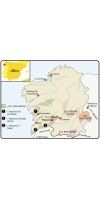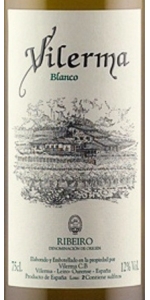Wine from Ribeiro

Ribeiro has a long history of wine production and is a region in Spain that is located in the northeast province of Galicia. Situated in the Miño, Arnoia, Avia and Barbantiño River Valleys Ribeiro includes 9 municipalities.
According to historians, the first vineyards were most probably planted by ancient Romans. Ribeiro was known for its sweet wines from the middle ages up until the 18th century. Sweet wines in the Ribeiro region were produced long before the Canary Islands and Andalusia.
Grapes dried in the sun were made into sweet wine. These were called Ribadavia. It was during the 17th and 18th centuries that vast quantities of sweet wine were exported throughout England and the rest of Europe.
The vineyards are always planted between 75 and 400 meters above sea level on the valleys and slopes.
Terraces are used on the slopes, which can be very steep. The soils are for the most part granitic with gravel and stones. This improves the structure of the soil and also reflects sunlight. The texture of the soil is sandy with a tendency to acidify. This is corrected by growers.
Ribeiro has an oceanic and Mediterranean climate, so it is humid and temperate, with average annual temperatures of 58 °
Vilerma Blanco Ribeiro is made from 80% Treixadura, 6% Torrontes, 4% Godello, 4% Albariño, 3% Loureira and 3% Lado
Ribeiro blanco is produced from estate-grown grapes using traditional winemaking.
Pale yellow color with green highlights.
Intense white fruit aromas when young, it develops complex nuances after a few years in the bottle.
In the mouth it is ample, full and pleasant with a long and fruity finish.
Fermentation in Stainless Steel tank at controlled temperature.
- back
Selected Options
Regions
Categories
Pricing
Countries
Regions
Grape Types
Wineries
Organic/Free Shipping
Ghost Hull Cabernet Sauvignon is made of 100 percent Cabernet Sauvignon.
Aromas of blackberry, elderberry and ripe plum are accentuated by notes of mocha, fresh tarragon, vanilla and oak. The palate is full-bodied and offers a lovely balance of acidity and tannins accompanied by rich flavors of dark fruit and black currant, ending with a juicy and lingering finish
The Prisoner Wine Company The Prisoner Red Blend is made from a blend of Zinfandel, Cabernet Sauvignon, Petite Sirah, Syrah, and Charbono.
Bright aromas of ripe raspberry, vanilla, and coconut give way to flavors of fresh and dried blackberry, pomegranate, and vanilla, which linger harmoniously for a smooth and luscious finish.The Prisoner Red Blend was inspired by the wines first made by the Italian immigrants who originally settled in Napa Valley. The Prisoner is now the most recognized red blend, leading the resurgence of interesting blends by incorporating Zinfandel with the unlikely mix of Cabernet Sauvignon, Petite Sirah, Syrah, and Charbono.
On the nose, dried blackberry, dried açai berries, and hints of cedar and tobacco leaf are accented by sweet spices of clove, cinnamon, and nutmeg. Flavors of ripe dark cherry, blackberry coulis, and hints of anise linger harmoniously for a soft, vibrant finish balanced by ripe tannins.
Chef Brett recommends pairing The Prisoner Red Blend with Kalbi Short Ribs or Chicken Mole Tostada.
Vineyards: When you outgrow winemaking tradition, you must forge your own path. And we did. The Prisoner exists because of the collaboration with our growers, many of which have been with us since the very beginning—from the Solari Family Vineyard in Calistoga, where old school sensibilities meet new techniques, to the Korte Ranch in St. Helena, a vineyard whose diligence outlasted the Prohibition and has sustained four generations.





